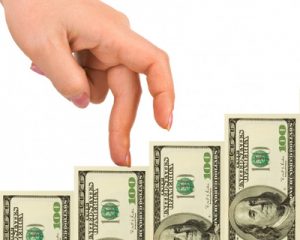Teachers all over the US in recent times have carried out a walkout in protest against poor salaries. Teachers from West Virginia, Oklahoma, and Mississippi have at a time gone out into the street for underpayment in the teaching profession. It’s appearing to no longer count as what used to be in teachers’ remuneration in the profession compared to other professionals.
South Dakota has a long history with low pay for teachers in the state. It has over three decades maintained the rock-bottom spot in the rankings of teachers’ take home in the United States.

The Unprecedented Rise Teachers’ Salary That Made History
2015 upwards saw a remarkable turnaround in teachers’ salary improvement in South Dakota. The Blue Ribbon taskforce set up by the governor of the state to take a look at teacher’s demand and as well the 2016 legislation which enacted a half-cent sales tax created a pathway into going from the lowest paid in the US to the 48th position in the past two years.
The education package saw the average teacher salary rise by as much as 8.8% between 2016 and 2017. This led to a rise from $41, 940 to $45,625. The target according to the Blue Ribbon education package report is a statewide average of $48, 500 for teachers which the governor and other stakeholders are hopeful will materialize.
From the 2018 estimates and rankings released by the National Education Association, South Dakota has the highest percentage rise in median teacher salary increase from 2015 to 2017
The average salary of South Dakota’s teacher’s pay has gone up from $42, 025 to $46, 979 within the two years period to move out of the bottom spot since 1985.

Acknowledging The Improvement
The South Dakota State education association leaders and Gov. Dennis Daugaard all agreed that the improved salary structure has helped in a positive light towards teacher recruitment in the state.
South Dakota school district administrators also supported the claim by saying that the salary raise has reduced drastically the shortages experienced with teachers in the past, only that some subjects still appears to be a challenge.
The pay increase has also led to a few openings in the educational sector.

As conveyed by the Associated School Boards Of South Dakota, an NGO responsible for statewide teacher listings observed that since after the increase about three years ago, listings have also dropped considerably.
The obvious reason is that more teachers are being retained now than ever before. Teachers reaching retirement age are also willing to stay longer. These are the conclusion reached by the Executive Director of the organization, Wade Pogany.
The chief of staff to the governor, Tony Venhuizen, who was fully involved with the Blue Ribbon Task Force on Education also acknowledged the significant change in the educational system after the implementation of the increase. According to him, teachers’ workforce in the state is now in a better position than what it was three years back with regards to new recruitment and vacancies.
Low teachers’ salary can be a reason for the poor performance in schools.


